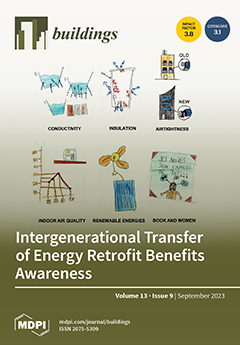Urban living space (ULS) is known to be a significant contributor to carbon emissions. However, there is a lack of studies that have considered the impact of spatial organization indexes (SOIs) of various scales on urban living space carbon emissions (ULSCE), and so far, no definitive conclusions have been reached. To address this gap, taking Tianjin as an example, the measurement methods of ULSCE and SOI at different scales were proposed, and a random forest model was constructed to explore the effects of SOI on ULSCE. The results indicated that on the district scale, Beichen had the highest carbon emissions and absorption in 2021, with carbon emissions reaching 1.43 × 10
8 t and carbon absorption at 7.29 × 10
5 kg. In terms of area scale, the comprehensive service area had the highest carbon emissions at 3.57 × 10
8 t, accounting for 47.70%, while the green leisure area had the highest carbon absorption at 5.76 × 10
5 kg, accounting for 32.33%. At the block scale, the industrial block had the highest carbon emissions at 1.82 × 10
8 t, accounting for 54.02%, while the forest block had the highest carbon absorption at 1.25 × 10
6 kg, accounting for 91.33%. Each SOI had varying impacts, with the industrial land ratio (ILR) having the highest order of importance at the area scale, followed by road network density (RND), residential land ratio (RLR), bus station density (BSD), public service facilities land ratio (PLR), land mixing degree (LMD), open space ratio (OSR), and commercial land ratio (CLR). ILR, RND, and RLR were particularly important, each exceeding 10%, with importance values of 50.66%, 17.79%, and 13.17%, respectively. At the block scale, building area (BA) had the highest importance, followed by building density (BD), building height (BH), land area (LA), and floor area ratio (FAR). BA and BD were particularly important, with values of 27.31% and 21.73%, respectively. This study could serve as both theoretical and practical guidance for urban planning to aid the government in developing differentiated carbon emissions reduction strategies that can mitigate the heat island effect and promote low-carbon healthy urban planning.
Full article





